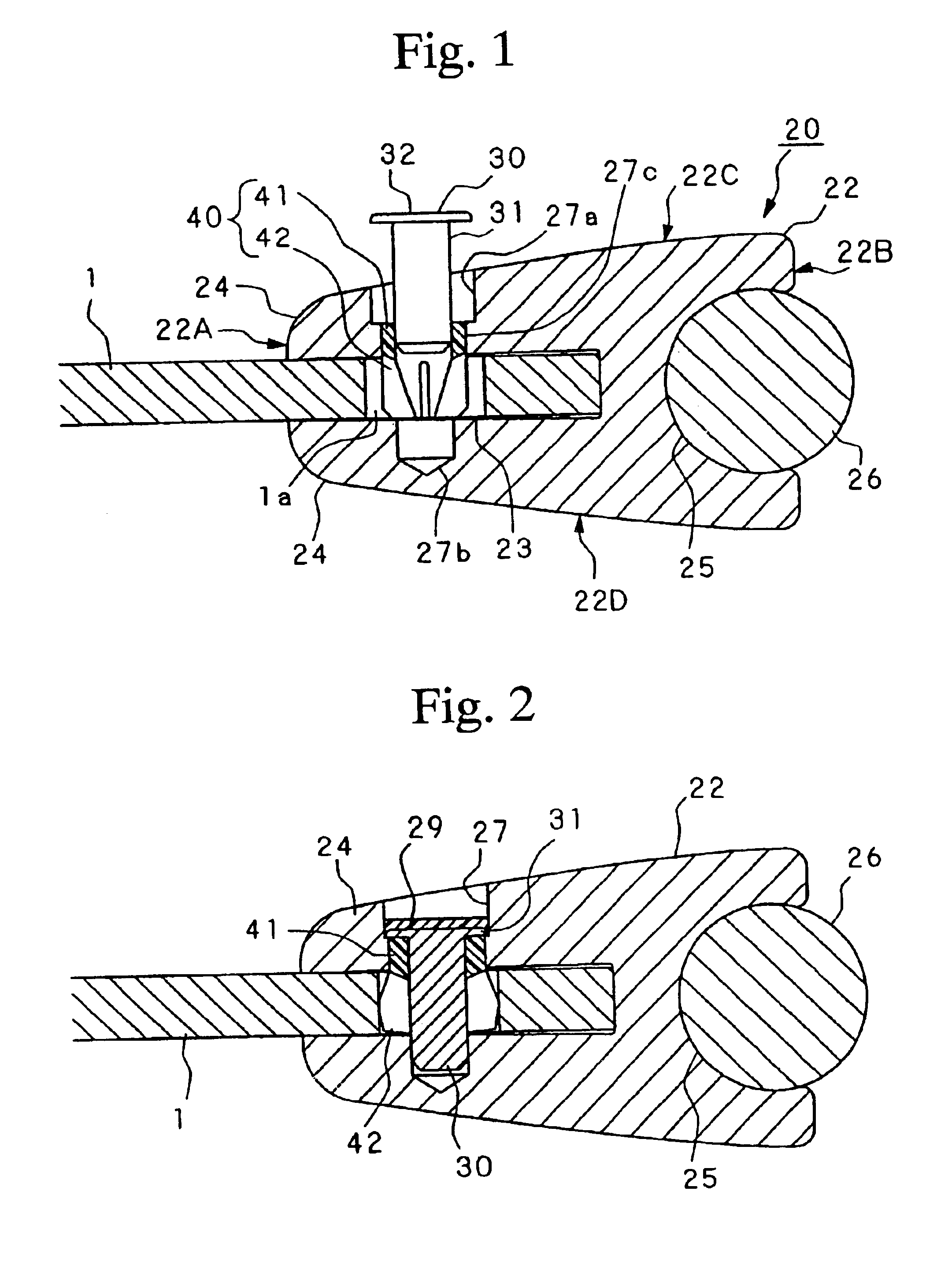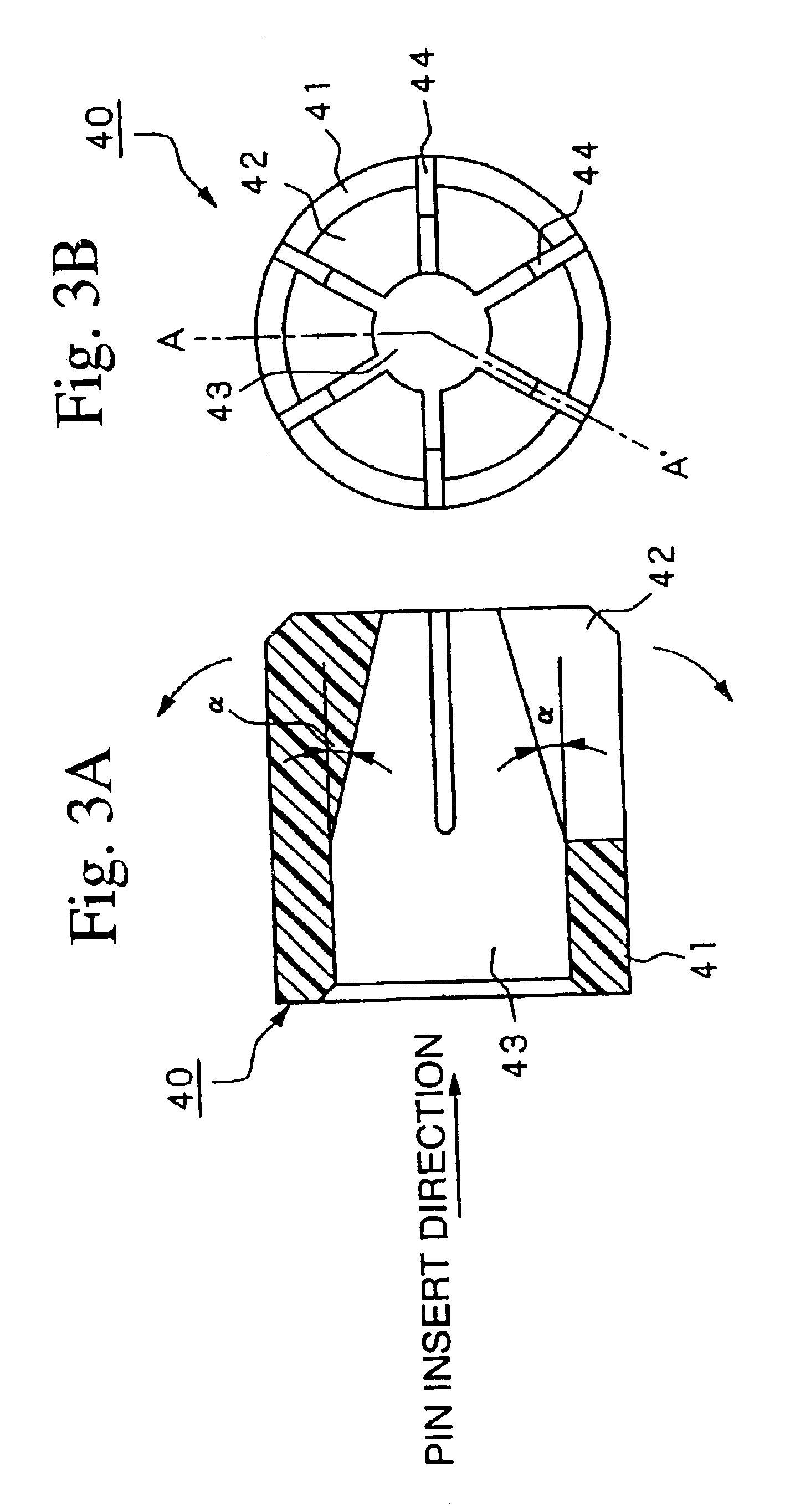Edge insulating member for electrode plate, method of locking and unlocking the edge insulating member, and edge insulating member installation jig
a technology of edge insulating member and electrode plate, which is applied in the direction of electrical-based machining electrodes, instruments, manufacturing tools, etc., can solve the problems of excess cost generation, complex work, and deterioration of the quality of the refined material obtained during the electrolytic refinement process, and achieve the effect of easy removal
- Summary
- Abstract
- Description
- Claims
- Application Information
AI Technical Summary
Benefits of technology
Problems solved by technology
Method used
Image
Examples
Embodiment Construction
In the following, the present invention will be described in concrete terms with reference to embodiments thereof.
FIGS. 1 and 2 show a first embodiment of the edge insulation member of the present invention, and are figures showing the state in which it is tightly fitted to an electrode plate.
This type of edge insulation member 20 is used, during electrolytic refining, by being fitted to both the edge portions and the lower edge portion of an electrode plate 1 as shown in FIG. 8, or to both the edge portions of the electrode plate as shown in FIG. 9.
The edge insulation member 20 includes a cylindrically shaped (rod shaped) main body 22, a fitting jig made up from a pin 30 and a stopper 40, and a support rod 26.
A fitting groove 23 and a jaw portion 24 for fitting the electrode plate 1 are formed at a tip portion 22A of the main body 22 so as to extend along the lengthwise direction of the main body 22. The fitting groove 23 is provided for fitting the electrode plate 1 to the main bo...
PUM
| Property | Measurement | Unit |
|---|---|---|
| angle | aaaaa | aaaaa |
| angle of inclination | aaaaa | aaaaa |
| temperature | aaaaa | aaaaa |
Abstract
Description
Claims
Application Information
 Login to View More
Login to View More - R&D
- Intellectual Property
- Life Sciences
- Materials
- Tech Scout
- Unparalleled Data Quality
- Higher Quality Content
- 60% Fewer Hallucinations
Browse by: Latest US Patents, China's latest patents, Technical Efficacy Thesaurus, Application Domain, Technology Topic, Popular Technical Reports.
© 2025 PatSnap. All rights reserved.Legal|Privacy policy|Modern Slavery Act Transparency Statement|Sitemap|About US| Contact US: help@patsnap.com



